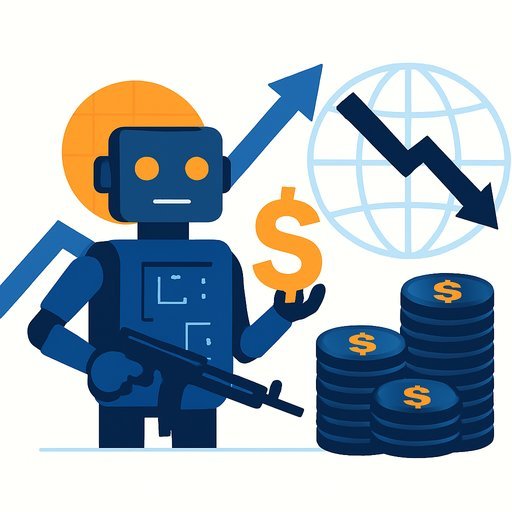Outcome over platform: how supply chain planning actually improves
The question that now matters is simple: will this transformation deliver outcomes we can measure? The answer isn't decided by a logo. It's decided by how well you orchestrate change, data, and intelligence around business goals. Executives want shorter cycles, better forecasts, and healthier working capital-without risking service or compliance.
Key takeaways
- Outcome over platform: pick the path that proves agility, accuracy, and resilience-not the flashiest feature set.
- Change is a KPI: adoption must be planned, measured, and audited to kill shadow planning and lock in ROI.
- Data is the foundation: governance, ownership, and harmonization are prerequisites to credible planning.
- AI accelerates decisions: explainable automation that reduces exceptions and cycle time beats hype every time.
What leaders are really asking
Requests for side-by-side estimates across multiple planning tools are not about picking a winner. They're about proving how any choice protects service and speeds decisions under pressure. Leaders now demand explicit change plans, measurable adoption, clear roles, and guardrails that prevent scope creep and time slippage. The message: make it explicit; write it down.
The operating model that wins: change, data, intelligence
Platform choice matters, but it's not the main event. Outcomes show up when you treat adoption as a deliverable, data as infrastructure, and AI as an accelerator. Here's the playbook executives can back with confidence.
Change: adoption as a measurable deliverable
- Define role clarity, training plans, and enablement materials before build-then track usage by role post go-live.
- Set adoption KPIs (daily active users, plan submission compliance, audit pass rate) and review them in steering forums.
- Make the planning system the single source of truth; block unofficial spreadsheets for core decisions.
- Use contract language that ties persistent non-compliance to remedies-signal that behavior is part of scope.
Data: where resilience really starts
- Name data owners for master, transactional, and reference data; publish a RACI that sticks.
- Write an integration plan with interface-by-interface ownership, SLAs, and test gates mapped to a calendar.
- Stand up quality checkpoints (completeness, timeliness, drift) that gate promotions between environments.
- Harmonize units, calendars, and product hierarchies early so scenario modeling works when disruption hits.
If you need a primer on governance basics, this is a useful overview from MIT Sloan: What is data governance?
Intelligence: AI that removes friction
- Prioritize exception triage to cut noise, not add it-rank by impact, route to owners, and close the loop.
- Automate hygiene work (health checks, data validations, parameter monitoring) so planners spend time deciding, not digging.
- Keep models explainable; attach confidence, drivers, and reason codes to every AI-assisted recommendation.
- Instrument observability: alerting on forecast drift, plan stability, and cycle time slippage.
For governance and risk guidance, see the NIST AI Risk Management Framework. If your team needs practical upskilling, here's a curated track: Executive-focused AI courses.
The scoreboard: numbers the business will trust
- Planning cycle time cut by ~50% (weeks to days).
- Forecast accuracy improved by 10-15% (MAPE).
- Inventory turns lifted by 1-2 points within 12 months.
- Adoption rate audited; shadow planning reduced to near zero.
- Exception rate lowered via intelligent triage; more time allocated to decisions, less to reconciliation.
90-day plan to de-risk your next program
- Set 3-5 outcome OKRs tied to finance and service; publish baseline and target dates.
- Lock a change blueprint: roles, training by persona, adoption KPIs, audit methods, and a steering cadence.
- Publish a data RACI and integration map with test gates and quality checks; appoint executive data sponsors.
- Stand up observability: dashboards for cycle time, MAPE, stability, adoption, and exception load.
- Pilot AI-assisted exception triage in one product family; measure cycle time and accuracy impact.
- Define go-live success criteria and exit conditions that include behavior, not just technical cutover.
Risk list to keep visible
- Scope creep from vague roles or unclear intake routing.
- Integration delays from multi-ERP handoffs and missing test data.
- Data ownership gaps that stall defect resolution.
- Unexplained AI recommendations that stall adoption or raise compliance flags.
- Training fatigue that erodes usage after the first release.
- Metric drift (MAPE, cycle time) hidden by lack of observability.
FAQs
Q: Why are supply chain planning teams shifting away from platform wars?
A: Leaders care more about measurable business impact-faster cycles, higher forecast accuracy, and improved working capital-than feature one-upmanship.
Q: How does change management affect outcomes?
A: It forces adoption and eliminates shadow planning, making the planning system the single source of truth so gains stick beyond go-live.
Q: Why is data governance critical?
A: Clear ownership, harmonization, and quality checks reduce integration delays and make scenario modeling credible under stress.
Q: How is AI improving planning today?
A: By triaging exceptions, automating manual checks, improving observability, and speeding decisions-without black-box surprises.
Where this leaves us
Platform debates will continue, but outcomes come from orchestration. Treat change as a deliverable with KPIs and enforceable behaviors. Treat data as infrastructure, designed and owned. Use AI to remove friction and shorten the path to a better decision.
Do that, and the scoreboard takes care of itself: cycles shrink, forecasts hold, inventory returns, and compliance stays clean. That's the story executives want-and the plan your teams can execute.
Your membership also unlocks:






